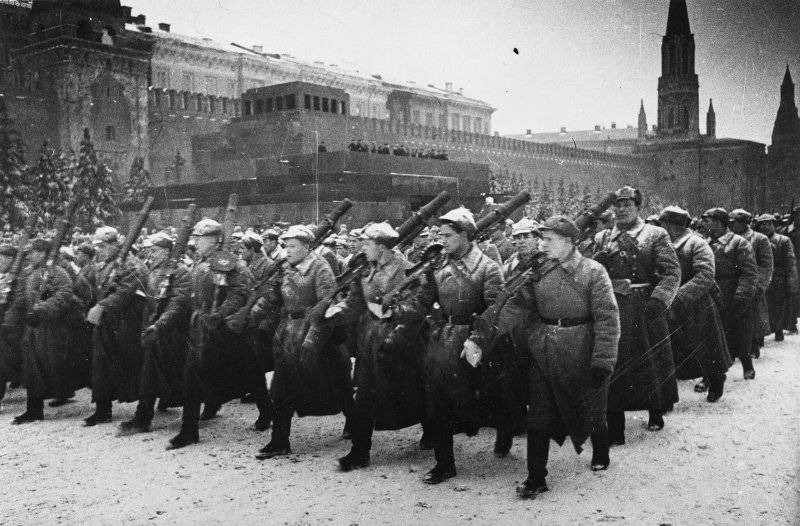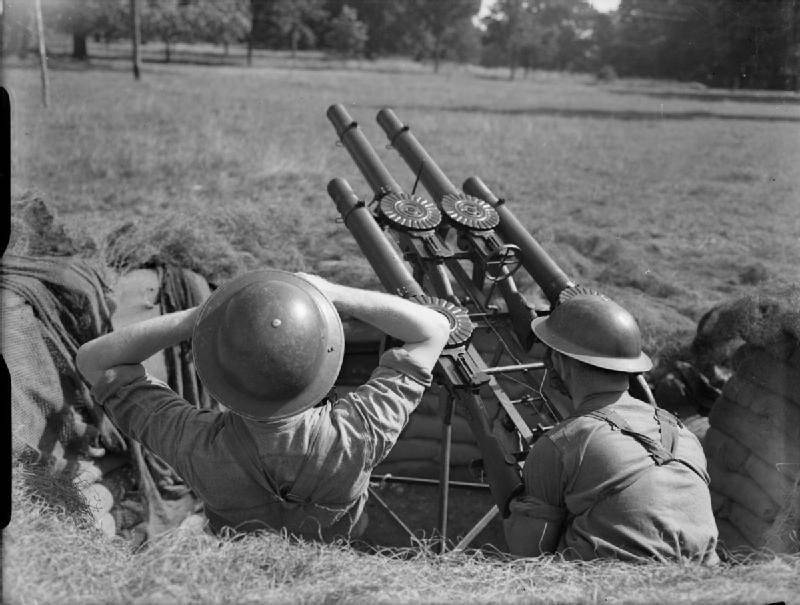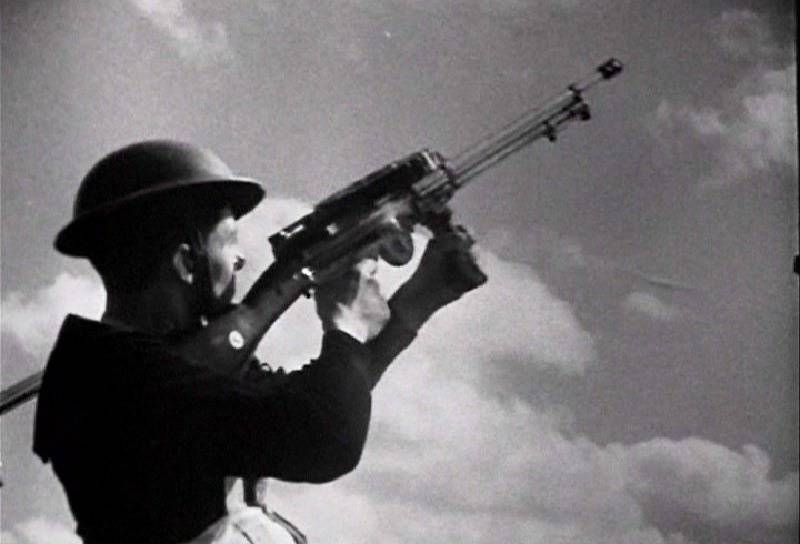British Lewis machine guns in World War II

aviation Lewis Mk 4, produced by Birmingham Small Arms, were returned to the ground. Basically, they were given out to local defense units or installed as anti-aircraft machine guns on mobilized ships. Several hundred old Lewis chambered for .30-06 purchased and received Lend-Lease in the United States along with the BAR - mainly it was the aviation Lewis manufactured by Savage (in the UK they were called Savage Lewis) . The Lewis machine guns did not have a barrel shroud and a massive radiator, they were equipped with a simplified sight, which were designed for 400 yards, a skeleton-shaped metal butt with a nape and wooden overlays were welded to the handle. A conical flame arrester-compensator was installed on the barrel. These machine guns were adopted by the British fleet. To distinguish between American machine guns and machine guns chambered for a British cartridge, a large red stripe was applied to the receiver behind the Savage-Llys store's nest, and the back half of the store was also painted over in red. In addition, the old "Hotchkiss" and "Lewis" were used on local defense armored trains, various anti-aircraft installations, urgently made armored vehicles and light aircraft.

In August, the so-called SS modification (Shoulder Shooting, also referred to as MK XI SS) was adopted for redeveloping the machine guns of the Navy - in August the Lewis (caliber .1942) shot the radiator, shortened butt, set the muzzle compensator. There are references to the transfer of a small number of Lewis machine guns to the Soviet Union.
It should be noted that the old Lewis captured machine guns were also used in the German army — for example, about 3,9 thousand machine guns of the 6,5 millimeter modification M.20 were captured in Holland and transferred to the German troops under the designation MG.100 (h). These machine guns were equipped with a 97 rounds magazine and had a mass of 13 kilograms.

In June, 1940 was presented by Dactyle Steel, a self-developed light machine gun which was a simplified Lewis system. The bolt had one lug, the return-spring spring was transferred to the tube that was attached to the receiver, a slightly redesigned disk magazine from the Bran machine gun was installed from the bottom. Such a "modification" made shooting with bipods uncomfortable, and the army refused it. It was supposed to use this machine gun on light ships as anti-aircraft. After a long search, production facilities and a machine gun, which was taken over by Hefah (Hef), were found, in May 1942 of the year was ordered by the British Navy as Hef X-Mark 1 (also found the designation Hef ”-V ). Production and use were very limited, so in November 44 of the year it began to be removed from service.
Information